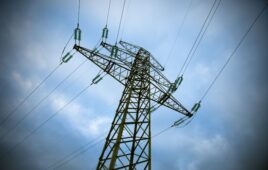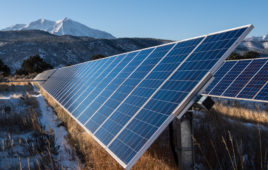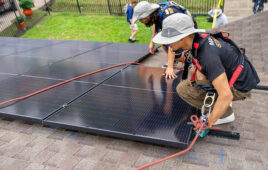
Paula Mints is the founder and chief market research analyst of the global solar market research firm SPV Market. Research.
We’d like to welcome Paula Mints to Solar Power World’s growing stable of guest bloggers. As one of the top market researchers in the country, Mints’ insights are sharp and incisive. Here is her first post for us.
By Paula Mints, Special to Solar Power World
One thing that can be said for the residential solar lease: Love it or hate it, the model is encouraging homeowners to consider including PV as an electricity generating option and as a way to control costs.
Residential solar leases are increasingly looking like a trend and not a fad. Why? This model enables homeowners to install PV systems without the high upfront cost of installation thus emulating the traditional utility model of renting electricity.
For solar businesses committed to this particular model the initial hardware investment should be more than offset by the eventual high margins. For investors, there are those high margins to look forward to eventually (and by eventually I mean perhaps), ensuring either a profitable exit or repayment at a profit.
Though this model looks as if it is a winner for both parties (lessor and lessee), it’s too early to make a judgment in this regard. In the future, lessees may not appreciate the escalation charge that is part of the lease structure. Also, in the future the difference between financing a PV system and leasing a PV system (in terms of cost of ownership) may make cost of leasing (as time goes on) seem less and less like a good deal.
For businesses engaged in the solar lease model, it is too early to assess the costs of unimaginable outcomes such as another U.S. housing crash — foreclosures and abandoned homes as well as abandoned solar leases, or continued strong growth in the housing market that encourages homeowners to trade up (an owned PV system may be an asset; a leased one may not be an asset). Legislated (and thus enforced) standardization of escalation charges (among other things) could take a hunk out of margins. New-connection charges from utilities could annoy lessees. Direct competition from utilities with their own lease models could well make this model less attractive (To all my friends who have created leasing options, here’s a hint: Partner with local utilities now before they figure out how to capitalize on this potential revenue stream).
Finally, remember that everything changes — everything — and sometimes the changes are swift. The example in this regard is the feed in tariff (FiT) model in Europe. Back in the day (and this day is relatively recent), practically everyone thought that this was the incentive model of the future and investors believed FiT systems provided a safe and reliable investment. Now every investment in a FiT installation is one retroactive change away from going bust.
Encouraging people to choose a distributed-generation PV system is a good thing, a step forward in the way we think about accessing our electricity. It is not too late to ramp up consumer education about owning the means of electricity production instead of continuing to rent electricity by the kilowatt hour. In the future with storage including new inverter technologies connecting to the utility grid may be an option — ah, what a wonderful world.
Paula Mints is the founder and chief market research analyst of the global solar market research firm SPV Market Research. Mints provides classic market research products based on primary research and focused on the supply and demand sides of the solar industry and its technologies. See what her company is all about or read her blog, “Notes From The Solar Underground.”





Home solar system is great idea because if we count total monthly bills and the one time installations charges of solar penal system then we can see the real money savings concept. This is good post, thanks for sharing it.
Planning for O&M has also not been a strong focus of solar leasing companies. In my experience, they are selling to build (just like it was a cash sale) and marginally focusing on the guarantee of performance. Third party ownership needs to focus on selling the intersection of profitable build AND low-cost long-term O&M, or this will cripple investor profitability in later-term lease years as well as bog down lease providers with service calls.
Pamela, that is a fantastic point.
Lease or not, most solar companies tend to under-emphasize potential O&M costs. Sure, the panels are warrantied for 25 years, but if a panel breaks, there’s still an RMA process that needs to take place. Just like a car, a solar power system should be checked on regularly.
While those companies that are selling build-only propositions may “get away” with not providing O&M (although they will still have unhappy customers), companies with long-term “peace of mind” models will have to hold true to their promises.
One good thing that has come out of all of the solar lease hype is awareness of the technology. This awareness has boosted our business by at least 400%. And we don’t offer leases. In fact we spend our entire marketing budget countering the imaginary benefits of leasing. We have created hundreds of websites and videos educating the public on what a poor investment a lease is for the lessee.
Our staff is well versed in the benefits of a purchase versus a lease and it doesn’t hurt that we are able to provide an installed system for nearly 1/3 the final cost of a $0 down solar lease even without considering the payment escalator.
In my opinion which is backed by over 16 years in the PV industry, Leases and PPAs will not survive 2014 now that multiple $0 down loan options with tax deductible interest are available. Couple this fact with today’s much lower (sub $3.00 per watt before incentives) pricing and the reign of the solar lease and PPA will soon end. Here’s a funny video about leases that you might enjoy: http://vimeo.com/70888784